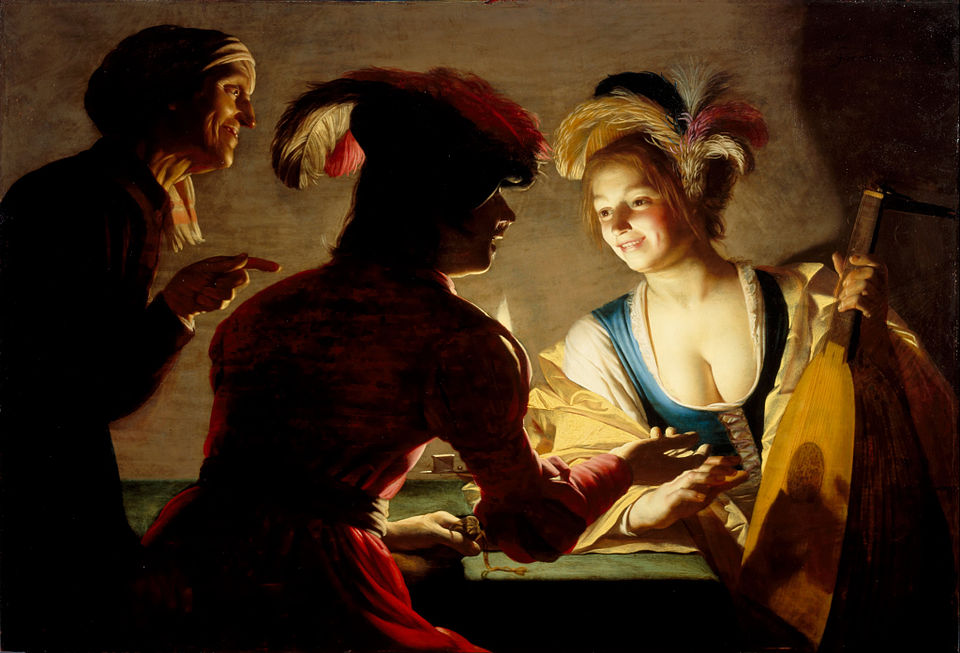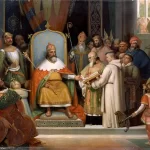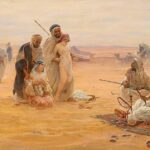In Beethoven’s era, spanning the late 18th to early 19th centuries, prostitution was a pervasive yet complex social phenomenon across Europe, deeply intertwined with urban life and economic realities. From the regulated brothels of Napoleonic Paris to the morally contested streets of London, attitudes toward prostitution varied, reflecting diverse cultural and legal landscapes. In Vienna, where Beethoven spent much of his life, prostitution thrived despite legal prohibitions, with estimates suggesting a significant portion of the population engaged in the trade.
Prostitution in Europe
Prostitution in late 18th and early 19th century Europe was a complex social phenomenon, shaped by economic necessity, moral attitudes, and diverse legal frameworks. Across the continent, approaches to prostitution varied, reflecting cultural and political differences.
France
In France, under Napoleon’s regime, prostitution was regulated rather than suppressed. A decree in 1802 mandated health inspections for prostitutes to combat syphilis, and by 1804, brothels known as maisons de tolérance were officially organized. This system acknowledged prostitution’s “inevitability”, focusing on public health control, a model that influenced other regions.
Historical sources suggest that at the turn of the century, Paris had around 30,000 prostitutes, with an additional 10,000 high-class prostitutes (courtesans). Assuming a population of 600,000, the ratio of prostitutes to the total population was approximately 6%. If considering only female prostitutes relative to the female population, the ratio could be as high as 13%.
England
In England, the 18th century viewed prostitution as a tolerated necessity for male sexuality and a survival mechanism for poor women. However, by the early 19th century, evangelical moralism drove a shift toward criminalization. The Vagrancy Act of 1824 labeled prostitutes as “common prostitutes,” imposing penalties like imprisonment with hard labor.
Police reports from London in the mid-19th century recorded about 8,600 known prostitutes, but unofficial estimates suggest up to 80,000, as many operated covertly. Using a midpoint estimate of approx. 35,000 prostitutes and a population of 1 million, the ratio is 3.5%. Relative to the female population, the ratio would be around 7%.
Other regions
In German states, regulation was common, with licensing and health checks mirroring the French model. In contrast, more conservative regions, such as parts of the Habsburg Empire, attempted to suppress prostitution, often unsuccessfully. The broader European trend, as noted in historical studies, was toward regulationism, where prostitution was tolerated as a “necessary evil”.
Comparative studies suggest small European cities might have had prostitute ratios of 0.5–1% of the population.
Prostitution in Vienna
Vienna, the Habsburg capital and a Catholic stronghold, had a long and complex history with prostitution, shaped by imperial and clerical influences. In the late 18th century, Empress Maria Theresa established the Chastity Committee in 1752, targeting prostitution, extramarital sex, and other immoral behaviors.
Harsh measures, including the deportation of an estimated 3,000 women to Temesvár (today Romania) between 1744 and 1768, were implemented but failed to eradicate prostitution. Emperor Joseph II abolished punitive measures like public shaming, but prostitution remained illegal under criminal law until the mid-19th century.
Despite legal restrictions, prostitution thrived in areas like the Prater, Spittelberg, and the inner city, driven by economic necessity and urban demand. By 1874, police records noted 6,424 registered prostitutes and an estimated 12,000 unregistered ones in a population of about 900,000, suggesting a significant presence. Earlier, in Beethoven’s time, with Vienna’s population estimated at 250,000–300,000, a similar proportion (approximately 2%) likely existed.
When it was suggested to Joseph II that brothels be licensed, he replied with sour irony, “The expense of roofing would be ruinous, for it would be necessary to put a roof over the whole city.”
Prostitution during the Congress of Vienna
The Congress of Vienna, held from September 1814 to June 1815, was a monumental diplomatic event aimed at reorganizing Europe after Napoleon’s defeat. It was also a social spectacle, with over 200 delegations, including emperors, kings, and diplomats, swelling Vienna’s population by a third. The city hosted lavish balls, banquets, and hunts, earning the name “the dancing Congress”. This atmosphere amplified the demand for prostitution.
Historical accounts describe a social scene rife with “love affairs and romantic entanglements”. The presence of high-class prostitutes (above the regular ones), combined with the influx of wealthy male visitors, points to an active prostitution scene. It is estimated that during the congress, it is likely that 20% (!) of the city’s female (partially temporary) population was involved in prostitution.
Did Beethoven visit prostitutes?
During the early 1810s, Beethoven was increasingly isolated due to his worsening deafness, grappled with profound loneliness that manifested in his personal writings and behavior, including his engagement with prostitution in Vienna.
Around 1813, Beethoven’s Tagebuch (diary) revealed a deep sense of despair, compounded by his social withdrawal and inability to form lasting romantic connections. In this period, he began frequenting prostitutes, a practice common among bachelors in Vienna. His coded letters to his friend Baron Zmeskall, a fellow bachelor, used terms like “rotten fortresses” to refer to prostitutes, alluding to both their temptation and the dangers of venereal disease.
In 1813, Beethoven wrote, “Be zealous in defending the Fortresses of the Empire, which, as you know, lost their virginity a long time ago and have already received several assaults—”; “Enjoy life, but not voluptuously—Proprietor, Governor, Pasha of various rotten fortresses!!!!”; “Keep away from rotten fortresses, for an attack from them is more deadly than one from well-preserved ones.”
These encounters, often shared with Zmeskall, were a stark contrast to Beethoven’s idealized views of love and women, leading to intense moral conflict. His Tagebuch entries express remorse, describing such acts as “bestial” without “spiritual union” and vowing to avoid the shame of seeking gratification from prostitutes.
He wrote: “Sensual gratification without a spiritual union is and remains bestial, afterwards one has no trace of noble feeling but rather remorse.”, “From today on never go into that house – without shame at craving something from such a person.”
Yet, he also grappled with the inevitability of human desire, noting that “sovereign Reason” should guide these natural urges, and even copied a Hindu text defending the body’s natural functions as divinely created: “To someone who was offended by the idea of the lingam <phallus>, the Brahman uttered, ‘Did not the same God who has created the eye also create the other human members?”
These fleeting encounters offered no relief for his isolation, instead deepening his self-disgust, evidenced by his deteriorating appearance—described by friends as run-down, rough and even repulsive.
Beethoven’s visits to brothels, highlight a man torn between physical needs and spiritual ideals.



